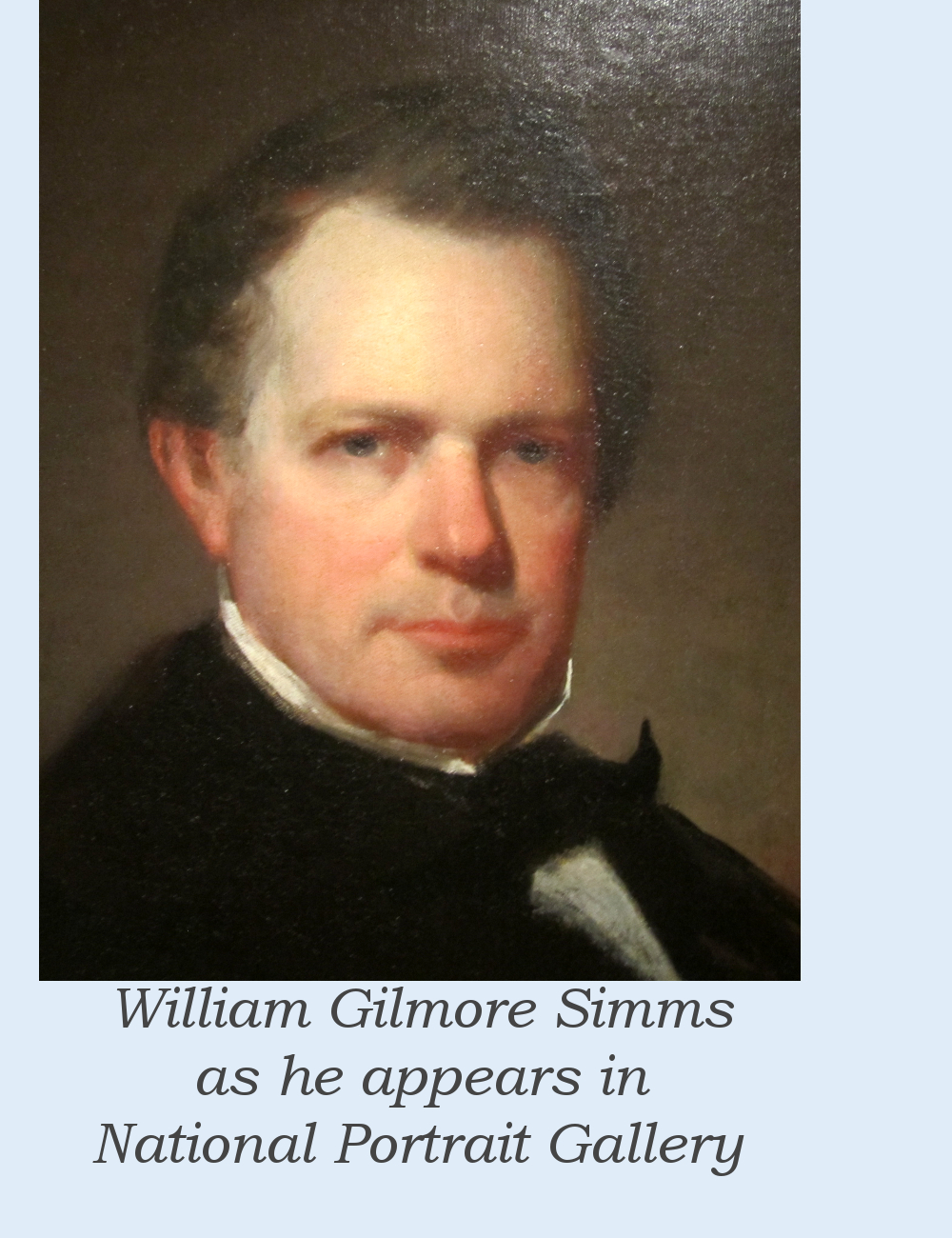
William Gilmore Simms
 Biography
BiographyWilliam Gilmore Simms (April 17, 1806–June 11, 1870) was an American poet, novelist, historian, and politician from the American South. His History of South Carolina served as the definitive textbook on state history for much of the 20th century. Literary scholars consider him a major force in antebellum Southern literature; in 1845 Edgar Allan Poe pronounced him the best novelist America had produced. Throughout much of his literary career he served as editor of several journals and newspapers, and also served in the South Carolina House of Representatives from 1844–1846.
Born in Charleston, South Carolina, of Scots-Irish ancestors, his mother, Harriet Ann Augusta (née Singleton, 1784–1808) died during his infancy. His father, William Gilmore Simms Senior (1762–1830), failed in business and joined Coffee’s Indian fighters, leaving Simms to be raised by his maternal grandmother, Jane Miller Singleton Gates, who had lived through the American Revolutionary War and told him many stories about it. Simms began to study law when he was eighteen and would eventually receive an honorary LLD from the University of Alabama in 1841.
Simms first wrote poetry at the age of eight. In his 19th year, he produced a monody on General Charles Cotesworth Pinckney (Charleston, 1825). Two years later, in 1827, he published Lyrical and Other Poems and Early Lays, and in 1828 became a journalist as well as editor and part owner of the City Gazette, a position he held until 1832 when the publication failed. Devoting his attention entirely to writing and in rapid succession publishing a number of popular novels and other works, while also editing several South Carolina newspapers, he made enough money to become part of the Southern planter class. Unfortunately along with that status he came to firmly support slavery (a “fire-eater”), an attitude that when held widely by Southerners helped lead to secession and creation of the Confederate States of America and the American Civil War.
During the American Civil War Simms espoused the side of the Secessionists in a weekly newspaper. Stragglers from Sherman’s army burnt and destroyed his plantation home Woodlands near the South Carolina border, along with 10,000 books and Revolutionary era manuscripts. Impoverished by the war, he took on many writing and editing chores which ruined his health, and he died of cancer at his eldest daughter’s home at 13 Society Street in Charleston. He is buried in Magnolia Cemetery.
Bibliography (wildly incomplete)
Lyrical and Other Poems and Early Lays (1827)
Atalantis, a Tale of the Sea (1832)
Martin Faber, the Story of a Criminal (1833)
The Yemassee: A Romance of Carolina (1835)
The Partisan (1835)
History of South Carolina (1842)
Life in America; or, The Wigwam and the Cabin (1848)
The Lily and the Totem; or, The Huguenots in Florida (1850)
Other links
Britannica
South Carolina Encyclopedia
Wikipedia